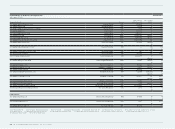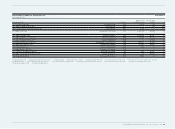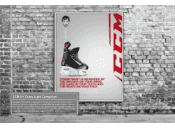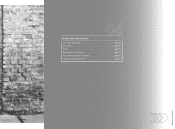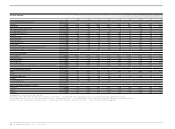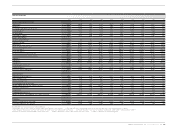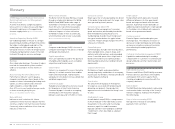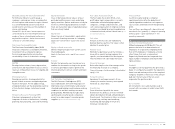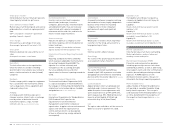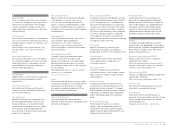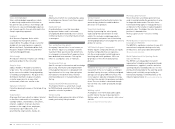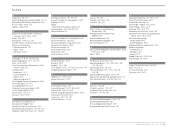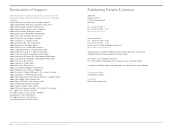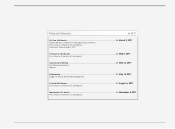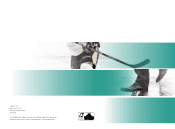Reebok 2010 Annual Report Download - page 244
Download and view the complete annual report
Please find page 244 of the 2010 Reebok annual report below. You can navigate through the pages in the report by either clicking on the pages listed below, or by using the keyword search tool below to find specific information within the annual report.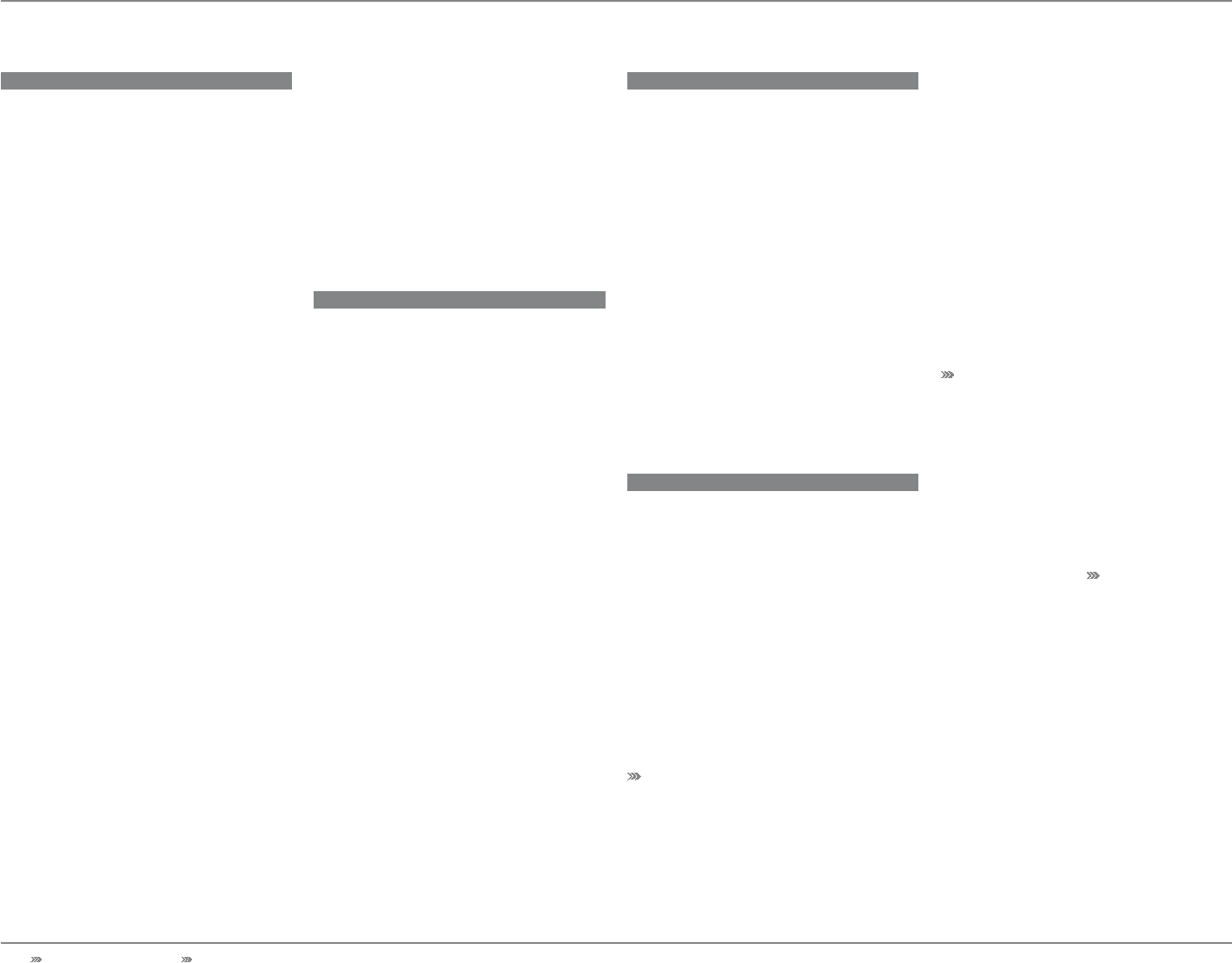
240 Additional Information Glossary
S
Sales working budget
Sales working budget expenditures relate
to advertising and promotion initiatives at
the point of sale as well as store fittings and
furniture. As sales working budget expenses
are channel-specific, they are allocated to the
Group’s operating segments.
Segment
Also Business Segment. Units within
a company that have profit and loss
responsibility. The adidas Group is currently
divided into six major business segments:
Wholesale, Retail, TaylorMade-adidas Golf,
Rockport, Reebok-CCM Hockey and Other
Centrally Managed Brands.
Sell-through
An indicator of how fast retailers are selling a
particular product to the consumer.
Shop-in-shop
adidas, Reebok or Rockport area within a
larger store. The concept may be operated
by the store or the adidas Group depending
on individual arrangements. The goal of this
distribution method is to give consumers
a similar experience to an own-retail
environment, albeit on a smaller scale.
Signature Collection
Collection bearing the name or the brand of top
athletes.
Stakeholders
All groups that have a direct or indirect interest
in the efforts and results of a company, for
example lenders, shareholders, consumers,
retailers, suppliers, licensees, business
partners in the supply chain, employees,
international sport federations, non-
governmental organisations, media, etc.
Swap
A derivative in which two counterparties agree
to exchange one stream of cash flows against
another stream.
Syndicated loan
A syndicated loan is one that is provided
by a group of lenders and is structured,
arranged and administered by one or several
commercial banks or investment banks known
as arrangers.
T
Top- and bottom-line growth
A company’s bottom line is its net income, or
the “bottom” figure on a company’s income
statement. More specifically, the bottom line
is a company’s income after all expenses have
been deducted from revenues. The top line
refers to a company’s sales or revenues.
Top-down, bottom-up
Specific concept for information and knowledge
processing. Information and empowerment
of management decisions is delegated from
top to bottom in a first step. After going into
more detail on the bottom level, the final
information/decision is transported back to
the top.
Toxproof mark/TÜV Rheinland Group
The Toxproof mark is a safety mark issued
by TÜV Rheinland, especially for testing the
quantities of toxins in products.
Trendscouting
Identification and commercialisation of future
trends, particularly lifestyle trends.
V
Vertical retailer
A retail company that (vertically) controls the
entire design, production and distribution
processes of its products.
Visual merchandising
Activity of promoting the sale of goods,
especially by their presentation in retail
outlets.This includes combining products,
environments and spaces into a stimulating
and engaging display to encourage the sale of a
product or service.
VOC (Volatile Organic Compounds)
Volatile organic compounds (VOCs) are organic
chemical compounds that can vapourise
into the air and may be harmful and cause
breathing and health problems. VOCs are
by-products of the shoe manufacturing
process.
W
Weighted average cost of capital (WACC)
Calculation of the cost of capital according to
the debt / equity structure, utilising a weighted
average cost of capital (WACC) formula. The
cost of equity is typically computed utilising a
risk-free rate, market risk premium and a beta
factor. The cost of debt is calculated through
the risk-free rate, credit spread and average
tax rate.
Working capital
A company’s short-term disposable capital
used to finance the day-to-day operations.
Working capital = total current assets – total current
liabilities
see also Operating working capital.
Working capital turnover
Shows how often a working capital item was
used in and replaced by the generation of sales
in the period under review. The ratio shows
how long working capital is tied up and thus is
an indicator of the volume of capital needed to
generate sales. The higher the ratio, the more
positive it is deemed to be.
Working capital turnover = net sales / working
capital.
World Business Council for Sustainable
Development (WBCSD)
The WBCSD is a global association of some 200
international companies dealing exclusively
with business and sustainable development
see also www.wbcsd.org.
World Federation of the Sporting Goods
Industry (WFSGI)
The WFSGI is an independent non-profit
organisation formed by sporting goods brands,
manufacturers, suppliers, retailers and other
sporting industry-related businesses. It is the
world authoritative body for the sporting goods
industry and is officially recognised by the
International Olympic Committee (IOC) as the
industry representative see also www.wfsgi.org.


